How SEO Press Releases Can Kickstart Your Business
-

Aaron Gray
- Blogs
-
 February 03 , 2023
February 03 , 2023 -
 14 min read
14 min read
While researching for this blog post, I found a few interesting ads on Google. Since we discussed diminishing returns on AdWords and ways to mitigate them in a previous post, it was fascinating to see these ads rank at the top of the search results for ‘seo press release.’
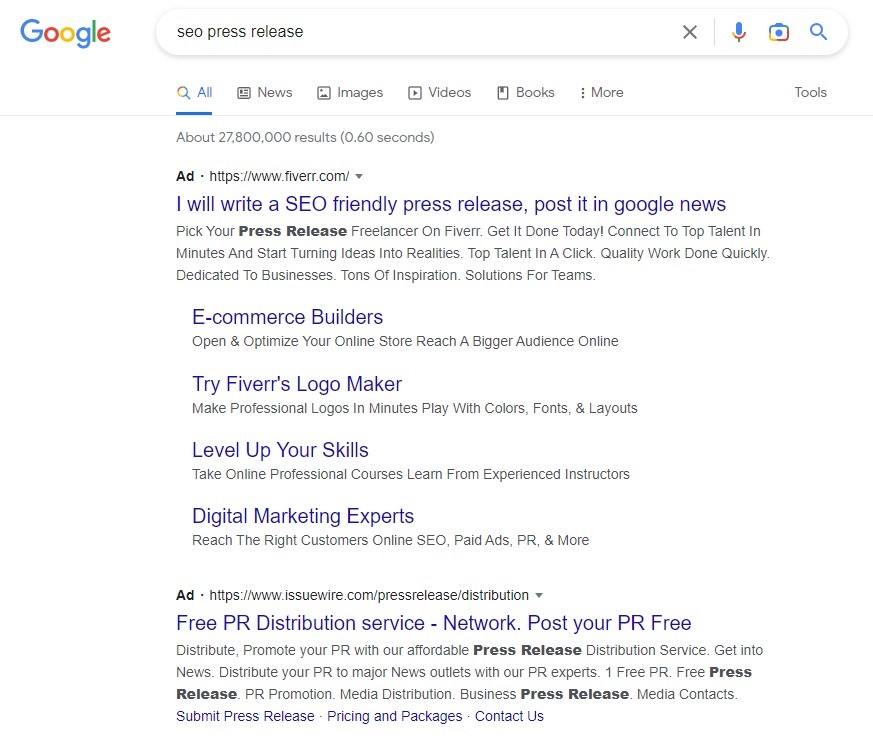
An SEO friendly press release – and it’s on Fiverr. Do press releases help SEO?
For starters, Google treats press releases the same way it treats guest posts – as long as you don’t pepper the content with dubious links, you’ll be fine. If it must contain links for whatever reason (that won’t anger Google), label them as nofollow links.
Otherwise, creating spam-laden articles is a great way to prove Matt Cutts’ point in 2014 on the fall of guest posting. Backlinks are more valuable when earned than purchased, especially in post-Penguin Google, and placing links for the sake of clicks is just bad practice. If an article provides the answers users are looking for, organic traffic will come, links notwithstanding.
I can’t stress that enough for guest posts, much so for press releases. Many businesses rely on these public relations (PR) instruments to build their reputation, but start-ups rely on them more since it’s a good way of letting the world know they exist now. A start-up will less likely see the light of day with a poorly made press release.
In this blog post, we’ll discuss press releases and how SEO can turn them into invaluable sources of information and, ultimately, drive traffic to your site.
Press release basics
We can’t talk about SEO in press releases without a clear idea of what a press release is. For lack of a simpler explanation, businesses write press releases if they want the media to cover an event or supply a response to an incident. It goes by many terms – press statement, news release, media release – but all of them mean the same.
According to Hubspot, press releases have at least nine applications.

For this post’s purposes, we’ll focus on a press release for grand openings. This use involves providing details about a new company ready to serve its intended audiences, though it’s also used for announcing a move to a new address.
Press releases aren’t exactly the longest pieces of content. A typical press release is a page long, two at most. Their shortness is reasonable, given that they’re intended for journalists, who may or may not have time to read a multiple-page article.
Shortness is no excuse for leaving the essential details out of a press release. A journalist only needs a glance to determine if it’s worth writing a story about. Here’s what one should contain.
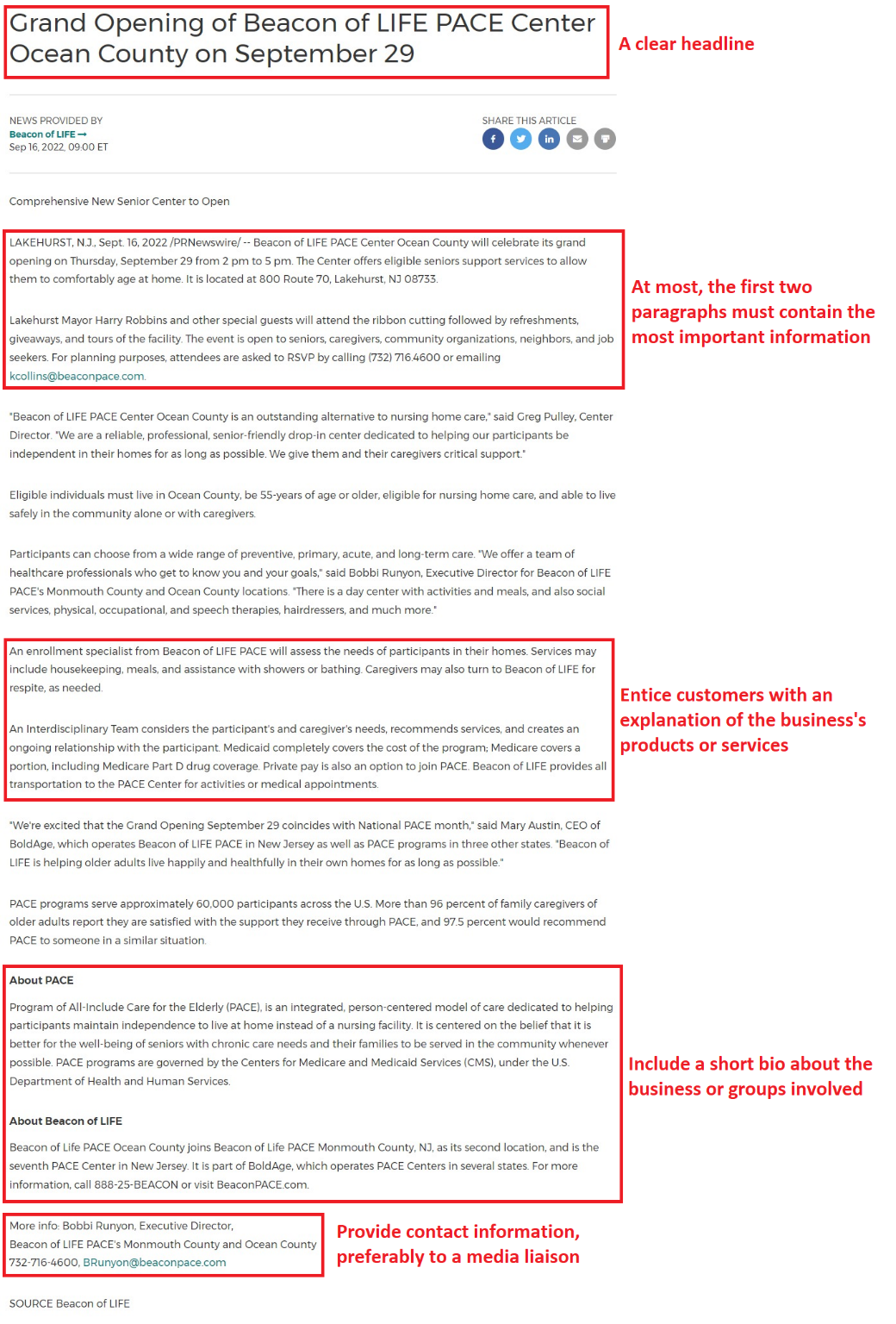
Writing a decent press release is one thing, but getting a media outlet to use it is another. Once a press release is sent out, a painstaking waiting game follows where the chance of getting a reply is around 3%. For comparison, according to the U.S. National Weather Service, the risk of death from a lightning strike is much higher at 10%.
Even if your press release is one of the 3% that gets used, it won’t necessarily guarantee growth. While recent statistics report that 68% of businesses said their brand enjoyed increased visibility after publishing one, only 8% saw their customer base grow.
Nevertheless, businesses still swear by press releases as the ideal way to disseminate company news and updates. They also have a relatively long shelf life, with roughly a third of businesses receiving a response several months after their press releases went live. You can use these traits to your advantage in drafting an SEO-friendly press release.
Working around nofollow
Before we delve into the techniques, there’s one asterisk you should know. Are you ready?
Press releases don’t directly help with SEO.
That has been the case since Google introduced the nofollow attribute in 2005 to curb spammy results. Advertorials and other content with advertising elements have to tack the ‘rel=nofollow’ tag in the links to let Google know not to crawl on them. The business’s site won’t be penalised, but it won’t receive link equity from the press release.
Additionally, in a Google Webmaster hangout stream in 2018, John Mueller pointed out that the search engine normally ignores links from press releases since ‘companies put the press releases out themselves.’ He doesn’t recommend relying on them for building backlinks.
If that’s the case, what’s the point, then? Emphasis on the word ‘directly,’ implying there’s an indirect way of helping with SEO. That’s the point I cited at the start of this piece: Traffic will come if the press release is informative and engaging enough. Content is king, indeed.
It also helps that Google hasn’t been strict with nofollow as it was years ago. Since March 2020, it has begun treating nofollow tags as hints than directives, meaning there’s a chance for links to quality content to rank in spite of the tag.
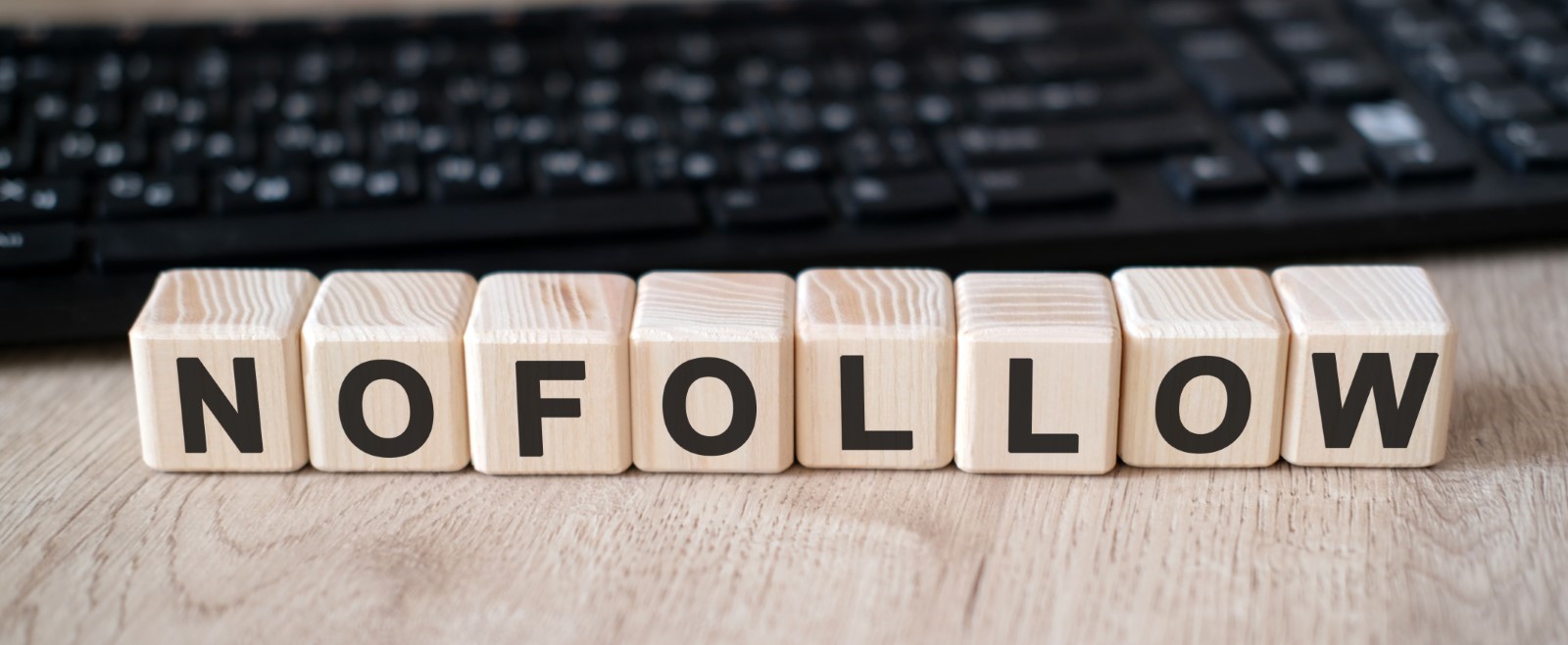
With that out of the way, combining SEO and press releases involves two factors: a well-written copy and the right keywords. We’ll get to keyword research later; in the meantime, consider the following tips and tricks in writing a copy that’s worthy of people’s attention:
- Write something newsworthy
Let’s return to the press release example earlier; the one about the grand opening of a new elderly care centre. While it may be newsworthy enough for a local paper, it might not make the cut for a more prominent media outlet.
Making your new business opening its doors newsworthy can be quite a conundrum. There will always be people that may think: ‘Okay, a new store just opened. So what?’ Unless the business fulfils a really specific niche, any grand opening press release will struggle to gain brand exposure for the business.
This doesn’t mean it’s impossible, however. A newsworthy press release starts with a catchy headline or title. Take this press release from a PR solutions firm, for example. Honestly, you can’t get any franker than this.
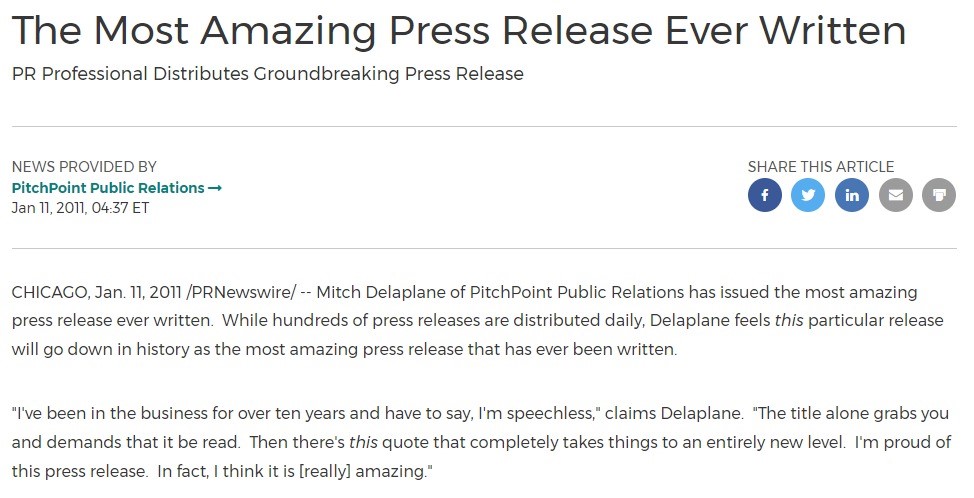
I can’t be sure if this release made it into any news outlet, but it was good enough to be cited as an example in Neil Patel’s blog about the ironclad rules for press releases. You’ll find it in its full glory under Rule No. 4, which explains making elevator pitches.
Is Patel’s blog a news site? Probably not. However, the site’s metrics on Ahrefs don’t make it any less impressive. It’s a reputable source on anything and everything SEO, with an average organic traffic of a million visitors every month.

Of course, not all press release titles have to be this brazen to warrant attention. Experts also cite that clickbait headlines – assuming they’re followed by relevant and engaging content – can grab attention without appearing spammy. Note that such headlines aren’t viable when a formal tone is required.
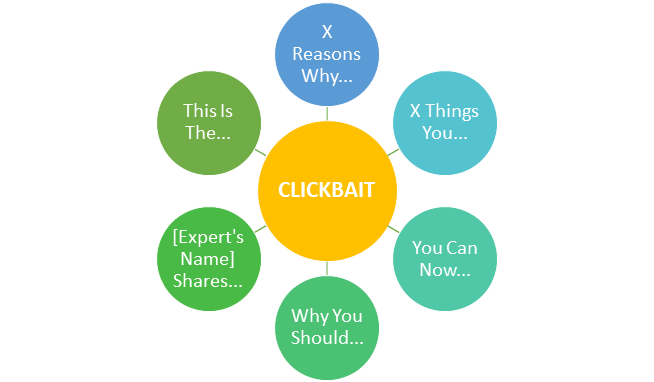
- Write in the Associated Press (AP) style
The AP News is one of the world’s most prominent independent media institutions. Although it prides itself on providing unbiased news, it also does press releases regularly and has an entire section devoted to press releases published by various third-party publishers.
Whether or not you’re in the news writing business, experts advise creating press releases in the AP style for two reasons. First, as I’ve mentioned, news outlets will receive and use them. Second, the rules set by this stylebook prioritise clarity and conciseness above all else.
We won’t go over the correct formats and such, as they’re beyond the scope of this post (you can find the rules here). But some rules can influence a press release’s SEO, particularly how the information is arranged and delivered. As a general rule in writing, you’d want to arrange the information based on the inverted pyramid model.

The top layer refers to the first two paragraphs, at most, answering the 5Ws and the How in traditional journalism. In this instance:
- Who: the business or organisation
- What: the grand opening
- When: date and time of the opening
- Where: the place of the opening
- Why: the business’s goals or objectives
- How: usually detailed throughout the release
In SEO, the top layer matters because it appears as the press release’s default meta description, including the publication date. Keeping this part concise enough (most stylebooks suggest keeping it under two sentences) to make the 5Ws and 1H visible in the search results can help with brand exposure.

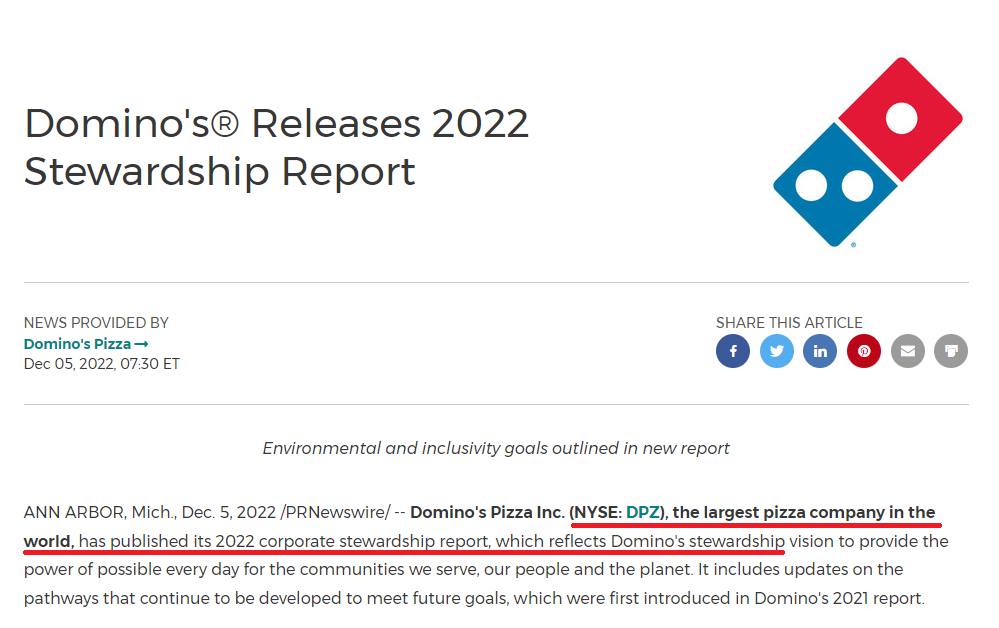
- Write for the correct audience
Largely due to the internet, the press release’s target audience has expanded beyond media people. Ordinary internet users can access these releases at the business’s site or any third-party publisher. As a result, the content has to be intelligible to the right customer base.
But it’s more than knowing if your customer base largely consists of trendy youngsters or the elderly. According to Business Wire, a major press release publishing service, launching the press release under the right circumstances can mean a lot. Otherwise, it can drown in other releases talking about more important news.
Case in point: The example below is Johnson & Johnson’s press release on the world’s first COVID vaccine being authorised for emergency use. The release was timely, given that the world badly needed a vaccine to curb the virus’s spread. The bullet points (sans the bullets) enabled readers to understand the release’s overall idea.

Reporters are more likely to read the release in its entirety, but consumers can be satisfied with just the key points. They’ll quickly realise this is good news for them and maybe laud the company for its efforts.
If it gets too confusing, another option is to take advantage of targeted distribution services of third-party publishers. All it takes is to pick from hundreds of distribution points, be it based on geography, industry, or demographics.
Keyword research: The other half
The other half of this formula for PR success is good keyword research. Naturally, keywords are how users look for things on the internet, and press releases are no exception. Some experts refer to this as ‘press release optimisation.’
Contrary to popular belief, keyword research requires relatively few tools. You can come up with several potential keywords in the brainstorming phase, after which use any of the following tools to confirm other details like competitiveness and relevance:
- Google autocomplete
Google’s autocomplete feature draws up a list of potentially relevant keywords before a user completes typing the entire search term. The list is constantly updated based on four factors: the query’s language, the origin of the search, trending interest, and personal search history.
The downside of autocomplete is that it’s a basic list. It lists the keywords but not important metrics, such as interest over time, keyword difficulty, etc. The list might include irrelevant keywords, as it predicts a user’s search intent, like the example below.
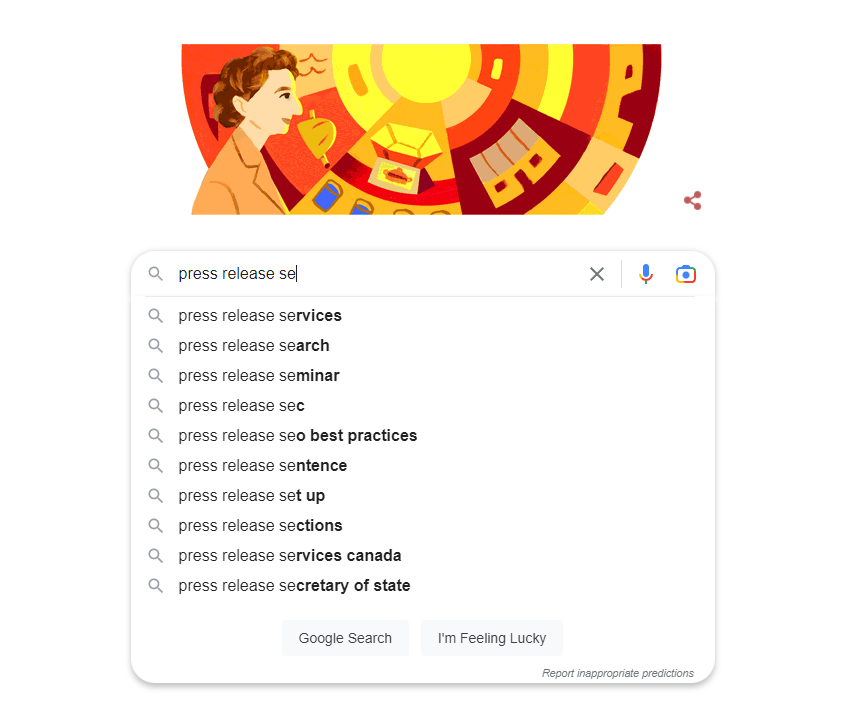
- Google trends
This free tool analyses how a keyword is trending in various parts of the globe. It also allows users to compare the search interest of two keywords over time. It’s useful for finding spikes in search interest of keywords and determining the right time to publish the release.
That said, experts say the figures provided by the tool are relative, not absolute. Moreover, the Related Topics and Queries sections below might produce irrelevant results, necessitating further validation of the keyword’s context. Some keywords might not yield data because the search interest is too low.
Another tool similar to Trends was Google Search for Insights. The difference is that this tool delivered a visual representation of keyword interest by region on the map. It was assimilated into Trends in 2012.
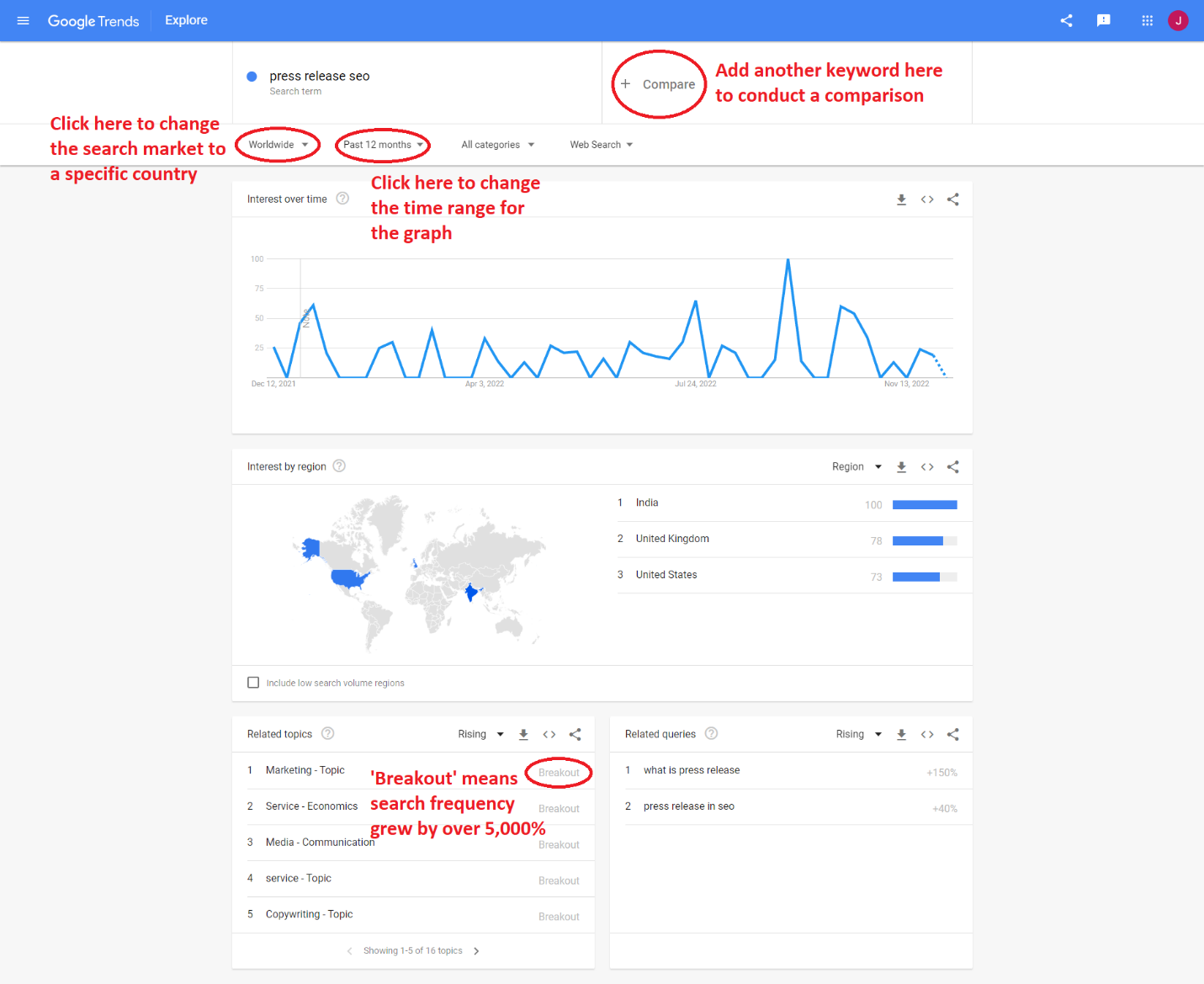
- Keyword planner tool
The Keyword Planner requires a Google account, which must be operated in Expert Mode, but it delivers all-inclusive keyword search data, from competition level to suggested bids. One way to maximise its use is to start with broad match keywords and narrow your analysis to the most suitable phrase and exact matches.
However, some users have noted that later updates have resulted in a slight decrease in the tool’s performance. In one instance, the tool generates 200 fewer keyword suggestions than previous iterations, though the total’s still more than enough for most businesses.
One nifty trick for keywords which are several words long is what I like to call the Matryoshka doll method. Yes, as in those wooden Russian nesting dolls with a smaller doll inside.

For example, if a keyword is ‘link building seo best practices,’ it’s only logical to rank for ‘link building seo’, as well. Use the longer keyword in your press release to rank in both queries and increase your brand’s visibility.
You don’t need as many as you might think. Experts have their takes on this, but a good number is up to six keyword phrases, with a link for every 500 words. Because a typical press release is between 300 and 400 words long, you may only have room for one link in the entire release. Putting too many keywords in risks it being penalised for keyword stuffing.
As for where to position these keywords for maximum effect, experts recommend three spots: the headline, subheadings (if any), and the first 100 words. Google first searches for keywords in these areas, especially in subheadings or text in bold or italics.
Just ask ‘leasreepressmm’
As thanks for getting this far into this post, here’s a titbit. Remember when I mentioned that Mueller said Google doesn’t consider press release links in search results? Well, five years before he said that, a simple experiment proved that it wasn’t an absolute rule.
The founder of an SEO firm wanted to prove a prior statement from then – Webspam Team head Matt Cutts about press releases not affecting SEO wrong – and proved they did. In 2013, the firm released a response-type press release with a quirk: an anchor text entitled ‘leasreepressmm’ that links to Cutts’ personal blog.
Before you ask, yes, that anchor text doesn’t make any sense. All the more surprising when the press release ranked in the first page for the keyword in the first few days since its launch, with several sites picking up the experiment. The screenshot below is the first page for the nonsensical keyword taken just recently, proving that people are still talking about it.
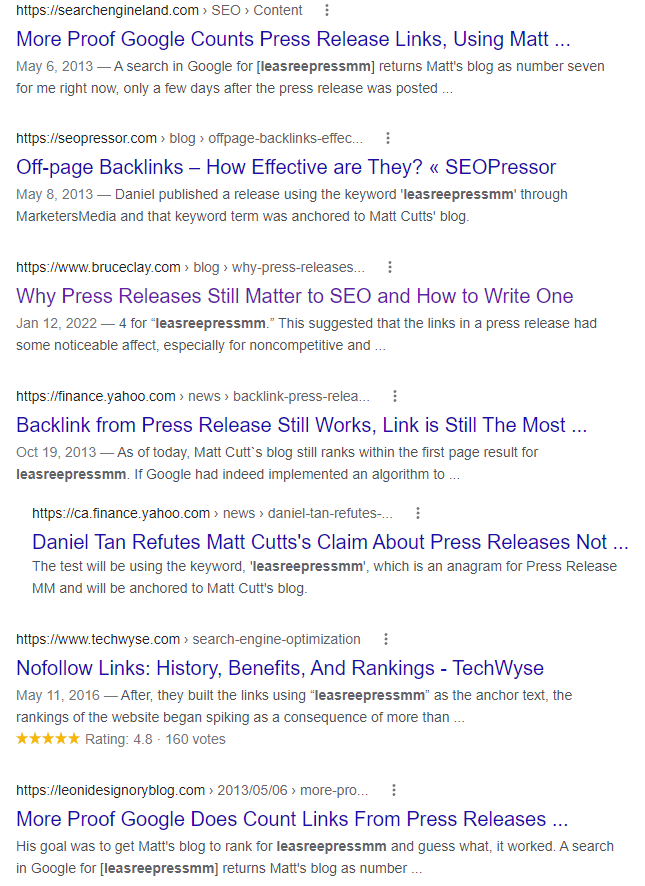
To ensure the results weren’t a one-off, the same firm decided to replicate the experiment in 2018. This time, it published a press release with a new anchor text, ‘verticalvnnlink,’ which links to Backlinko, another reputable source of SEO information. While the search returned far fewer results, the top result includes said press release.
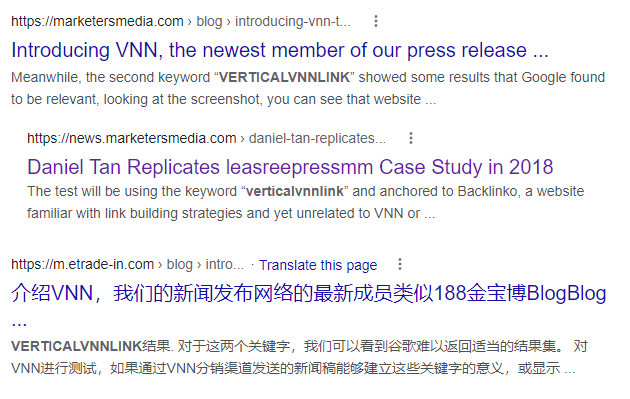
In both cases, the firm proved that Google still indexes press releases with anchored keywords, making for a case in favour of SEO press releases. Of course, I’m not saying you can use such keywords in your next release because that’s hardly the point. Your choice of keywords should strike a balance between competitiveness and relevance.
Conclusion
Amid updates to Google’s algorithm and the developers’ insistence to the contrary, press releases benefit from SEO as much as any other piece of content. The same principles even apply: Write a piece of content that’ll benefit people, not the search engine. These tips and tricks will help make any grand opening a success.
I understand that it can get intricate at times, but there’s always the option of asking for expert help. Give our team at Pursuit Digital a call today.
Subscribe to Our Blog
Stay up to date with the latest marketing, sales, service tips and news.


